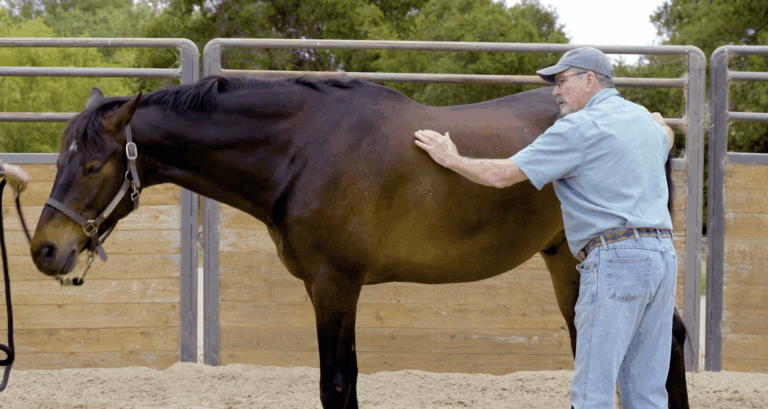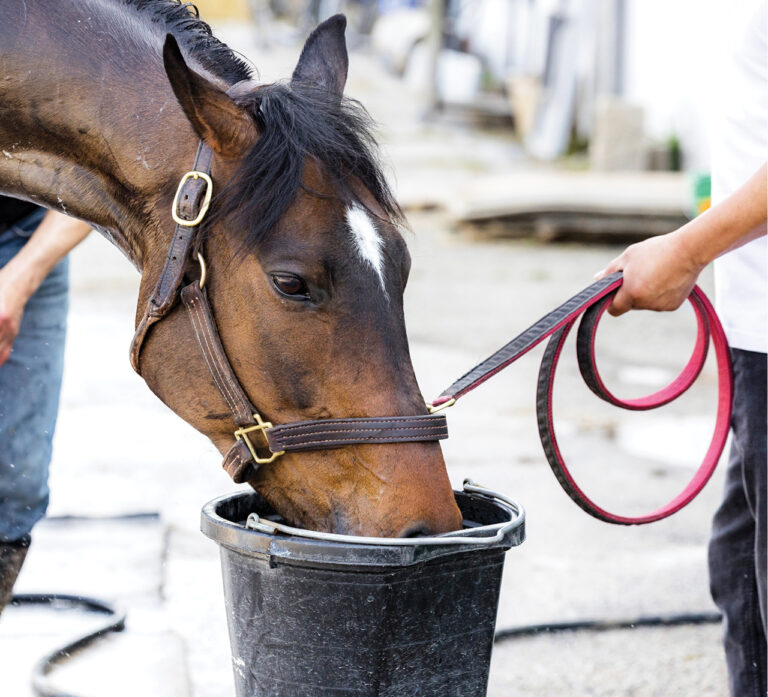When wet weather rolls in, so do a variety of skin conditions that can affect your horse’s health and comfort. Prolonged exposure to rain, mud, and moisture can create the perfect environment for bacterial and fungal infections. This can lead to issues like rain rot, pastern dermatitis, and allergic reactions from insect bites.

Rain Rot
Rain rot, also called rain scald or dermatophilosis, is a bacterial infection caused by the bacteria Dermatophilus congolensis.
Cause: Typically, the bacteria are dormant on your horse’s skin and become activated in wet conditions, such as during rainy, high-mud seasons. This causes inflammation, resulting in lesions and scabs in your horse’s coat.
Treatment: Mild causes are straightforward to manage. Bathe the affected area with anti-microbial soap and curry and brush to remove the scabs. Because the bacteria can spread to other horses, you’ll want to disinfect grooming materials used on a horse with rain rot. More severe cases of rain rot may require antibiotics from your vet.

Pastern Dermatitis
Equine pastern dermatitis, also known as scratches, mud fever, grease heel, and even grapes, are universal terms used to describe any dermatitis or “infection of the skin” around a horse’s lower legs
or pasterns.
Cause: Unlike other skin conditions, with pastern dermatitis, typically there’s a primary concern—the skin barrier is compromised—and a secondary issue, such as a bacterial or fungal infection, that can cause swelling, lesions, and scabs.
Environmental factors seem to be the common denominator for horses that struggle with the condition. Including allergic reactions to food, insects, grass, or prolonged time spent in wet, muddy environments or wet, unclean stalls.
Treatment: With pastern dermatitis, response time is important as edema and infection can cause lameness. Treating scratches requires addressing the infection with medicated ointment and antibiotics, along with cleaning and clipping the affected area.
Insect Bites
While seemingly straightforward, insect bites can cause skin challenges for your horse, especially if they have an allergic reaction. Conditions, such as sweet itch, which causes small, itchy welts around your horse’s mane and the top of his tail, and hives, or raised welts, can appear in humid or wet months when bugs are at their peak.
Cause: Sweet itch is caused by an allergic reaction to Culicoides midges, the tiny bugs that are prevalent in humid and wet seasons and regions. Hives are a result of an allergic reaction to insect bites, typically mosquitoes or gnats, but also to midges, and to stings and medications.
Treatment: With sweet itch and hives, the primary treatment is to alleviate discomfort. Try bathing with soothing shampoo or applying topical ointment. Your vet may also prescribe steroids and antihistamines to calm the hives.




